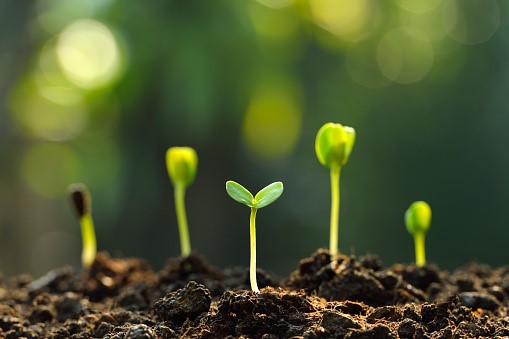
New to gardening? How do you start? Start Here!
Have no fear, nature loves to participate. It won’t always make it easy, but with patience, focus, and acceptance of the inevitable mistakes or bad luck, it can be fun, satisfying, and rewarding.
There are options to get your garden going. No space? Check out books at your library about container gardening. All you need to start is a porch or a sunny window and the commitment. Homegrown tomatoes are positively the best, and you only need one plant for a robust harvest. For some flower additions to your home, marigolds in pots or even old containers provide flowers in abundance and super easy!
Or, if you don’t have any space at home, you may be able to score a plot at the local community garden. Check your community website for information.
Now, let’s plan. We will focus on outdoor gardening for this entry, and the garden prep basics will be the same for a flower bed as for vegetables and herbs. The basic starting question is – where to locate the garden? Three things to keep in mind: access, water, and light. Can you get to the space easily? Can you realistically water the space? And most importantly, does it have good sun exposure? Are there branches or shrubs that could hog the light? The space will be fine as long as the sun can reach your crop for at least 4-6 hours a day.
Next, mark out the space. I went very low-tech and used sticks that were handy in the yard to lay out the edges of the garden. Do not worry about making it a traditional shape; use the space you have to its best advantage. Choose where the sun is best.
Utility line disruptions are a concern for any new digging, even a garden, so be sure to call 811 at least 48 to 72 hours before you begin your project to allow time to have utility lines marked. It’s free!
How to prepare the soil for a garden? Try laying out cardboard or multi layers of newspaper on the site to kill off the grass/weeds in that area. Get some rocks to hold corners down. Now is a good time to do this; after a couple of months, the smothered grass/weeds won’t be nearly as much of a problem. Pull clods of grass, shake off the soil, and start a compost pile with the waste, or just relocate them to a low spot in your yard. Don’t re-use in your garden; those roots still have some life in them and will grow back if given the chance.
So, assume the soil needs amending. Dump in well-aged manure, compost, and maybe some leaves left over from fall. Be generous, but mix well.
This is this layperson’s method of starting a garden. Sometimes the spirit moves you to act without all the answers and the skills. Use that enthusiasm to your advantage! Gardening is a learning experience, and the fun factor cannot be stressed enough. Decide what goes where and have fun!
Other Things to do in the Garden Now:
~ Begin to rake off old mulch.
~ Divide perennials if needed.
“The flowers of late winter and early spring occupy places in our hearts well out of proportion to their size.” — Gertrude S. Wister
Caroline Poppendeck, Librarian
Steele Memorial Library
